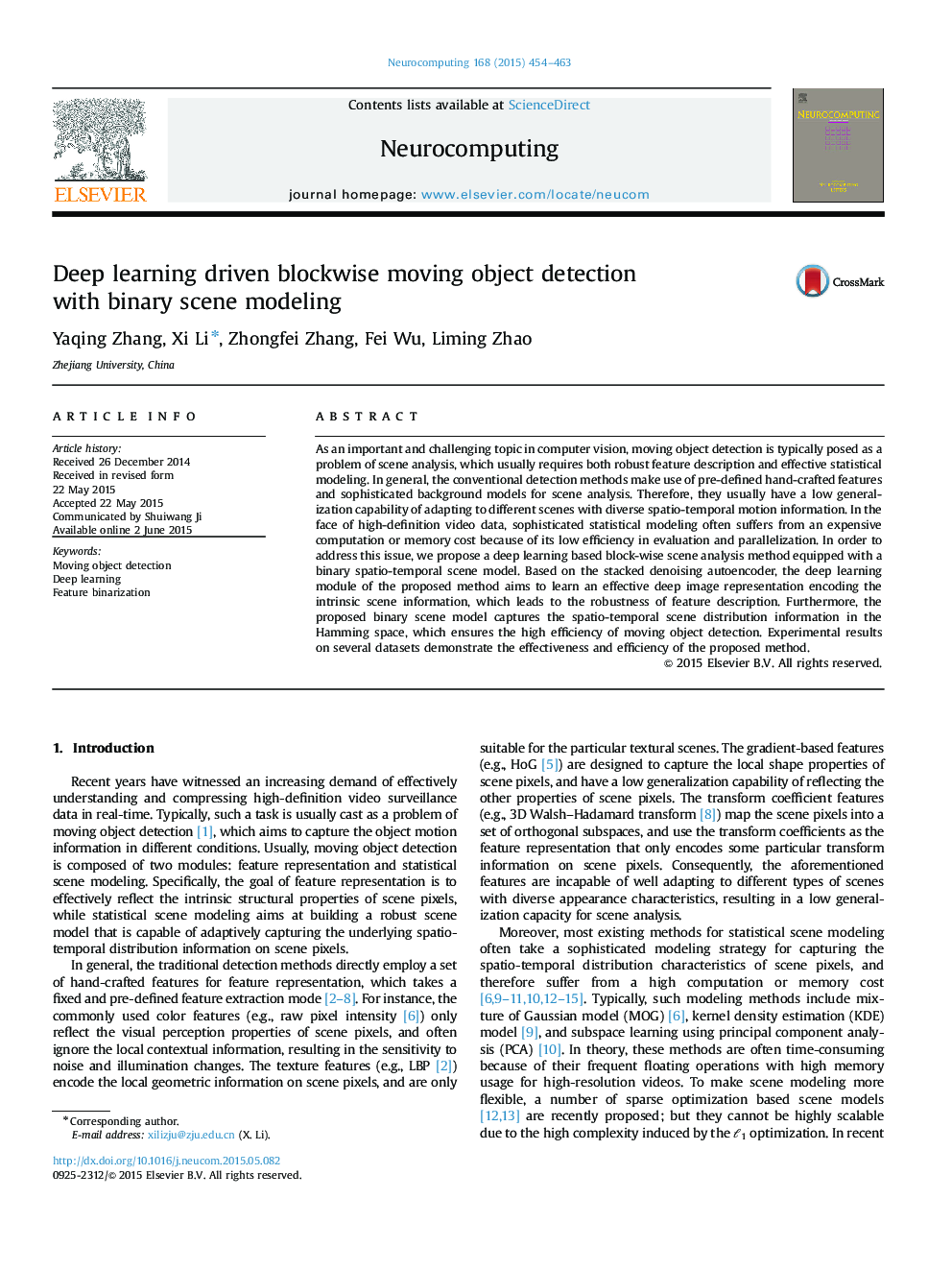| Article ID | Journal | Published Year | Pages | File Type |
|---|---|---|---|---|
| 411760 | Neurocomputing | 2015 | 10 Pages |
As an important and challenging topic in computer vision, moving object detection is typically posed as a problem of scene analysis, which usually requires both robust feature description and effective statistical modeling. In general, the conventional detection methods make use of pre-defined hand-crafted features and sophisticated background models for scene analysis. Therefore, they usually have a low generalization capability of adapting to different scenes with diverse spatio-temporal motion information. In the face of high-definition video data, sophisticated statistical modeling often suffers from an expensive computation or memory cost because of its low efficiency in evaluation and parallelization. In order to address this issue, we propose a deep learning based block-wise scene analysis method equipped with a binary spatio-temporal scene model. Based on the stacked denoising autoencoder, the deep learning module of the proposed method aims to learn an effective deep image representation encoding the intrinsic scene information, which leads to the robustness of feature description. Furthermore, the proposed binary scene model captures the spatio-temporal scene distribution information in the Hamming space, which ensures the high efficiency of moving object detection. Experimental results on several datasets demonstrate the effectiveness and efficiency of the proposed method.
